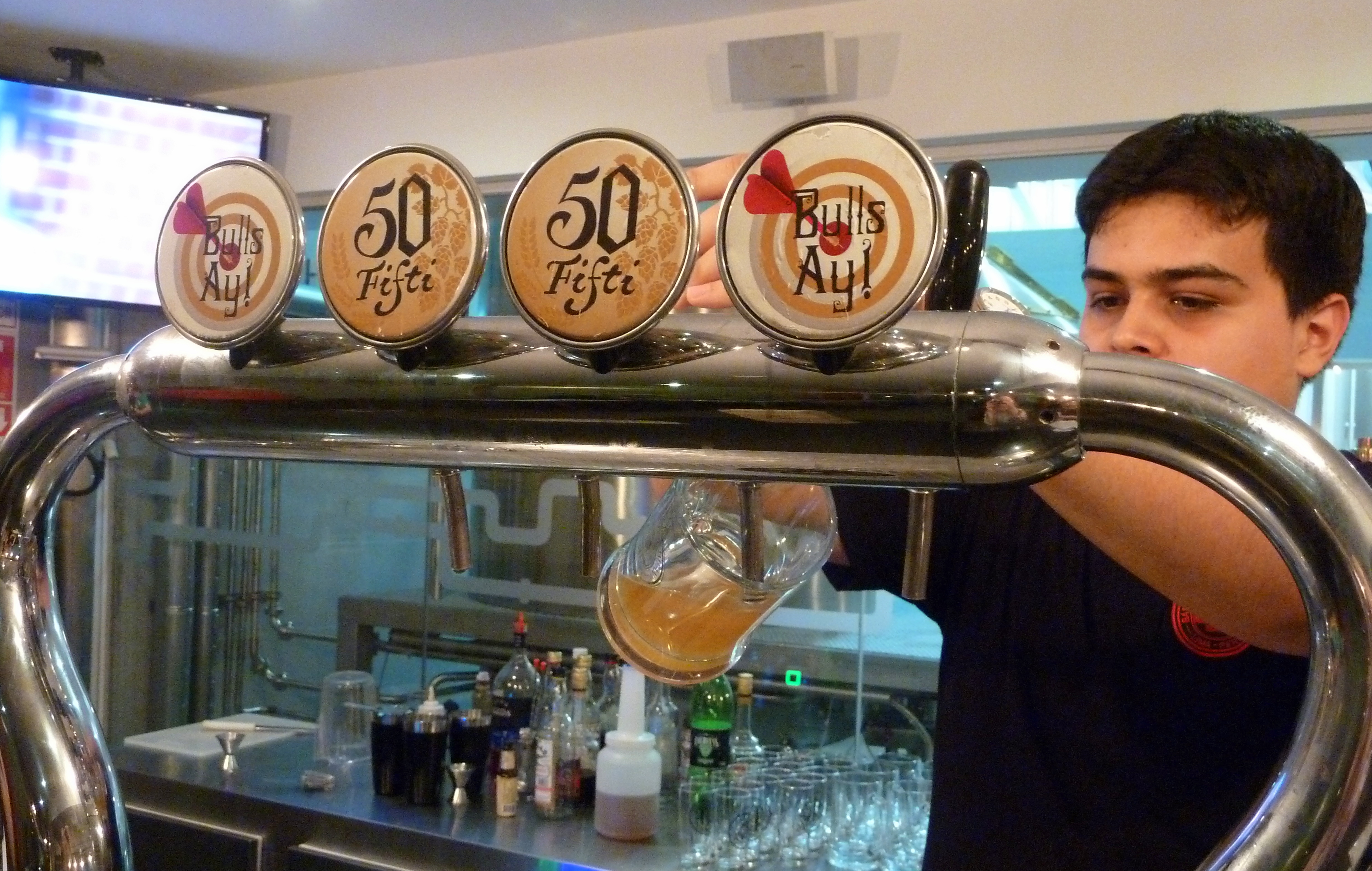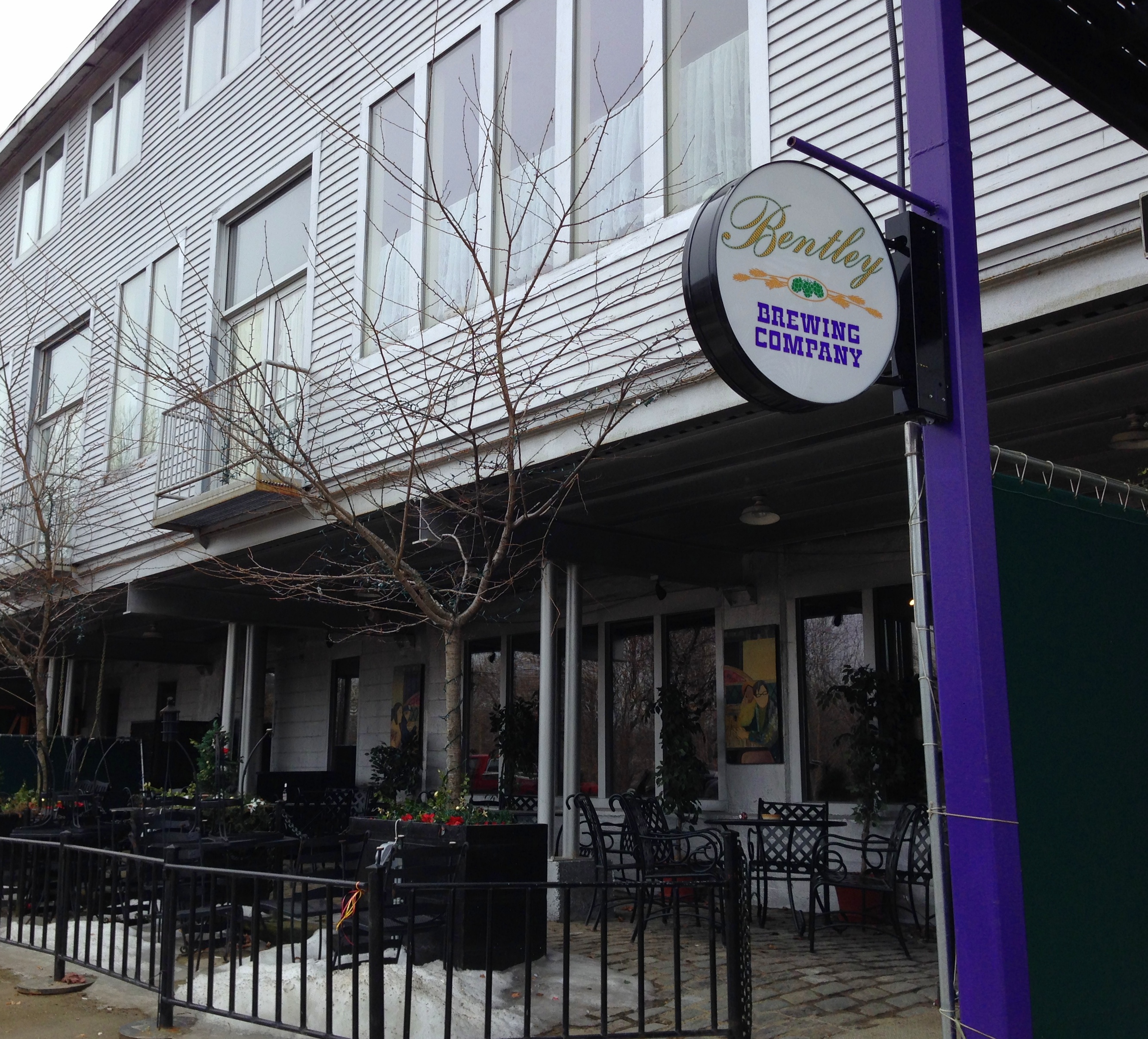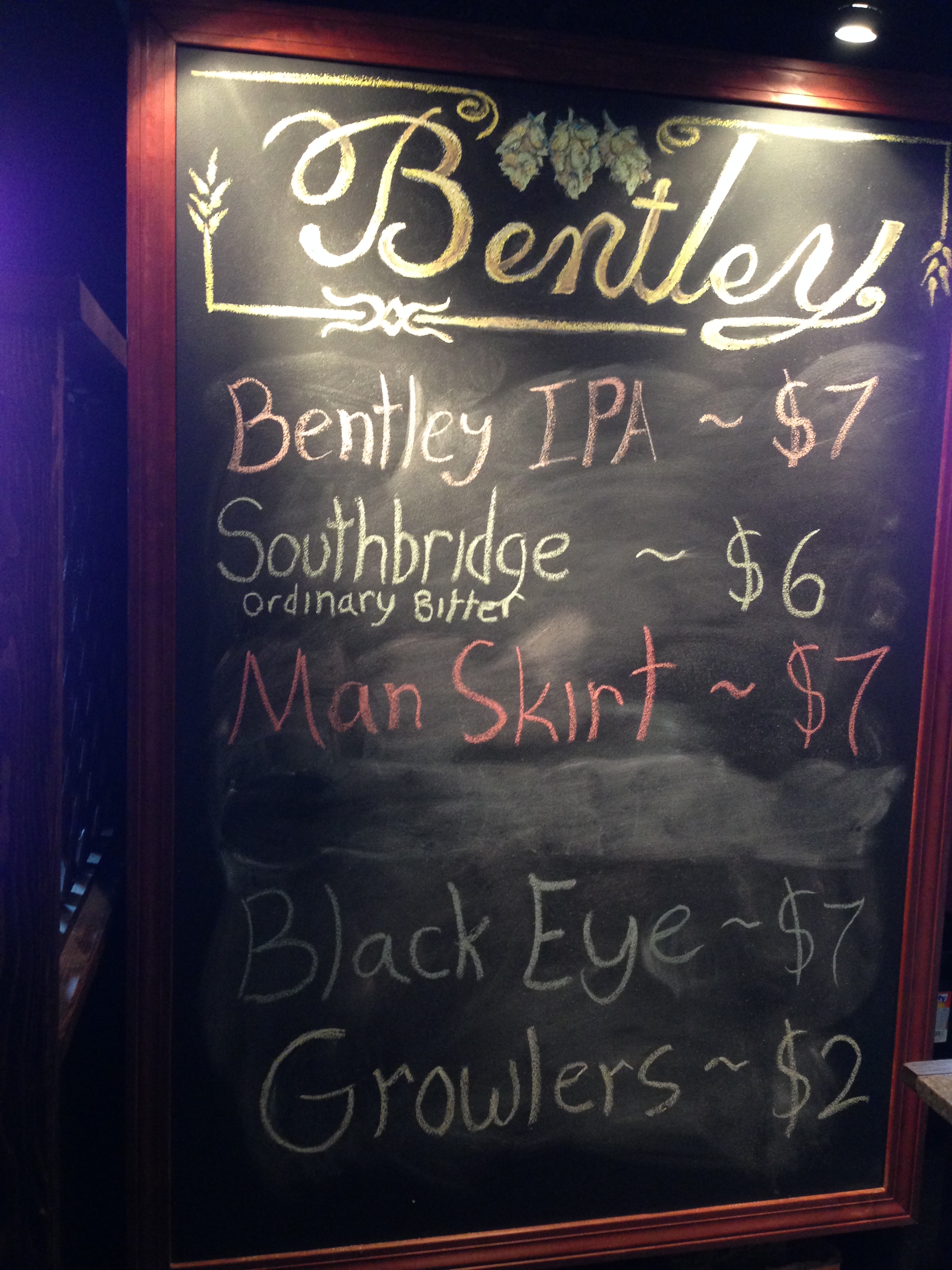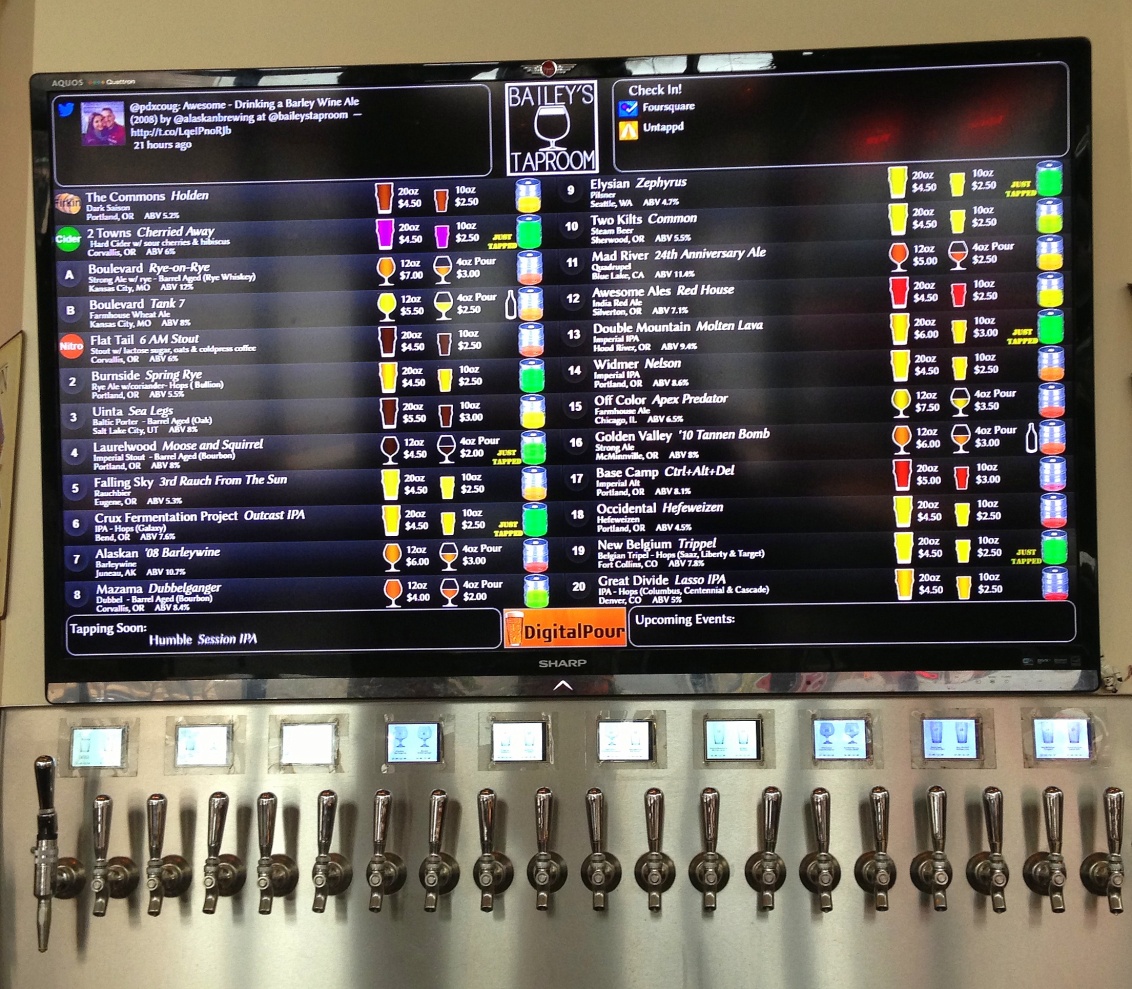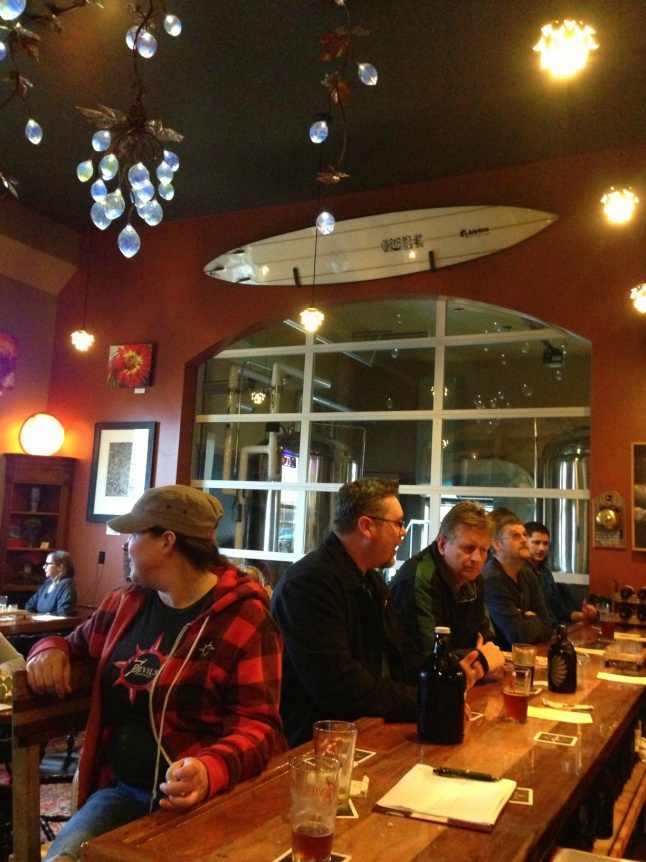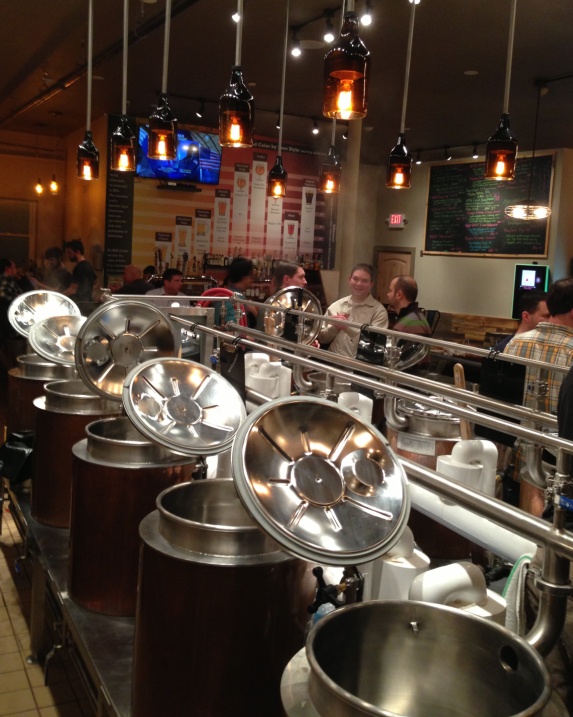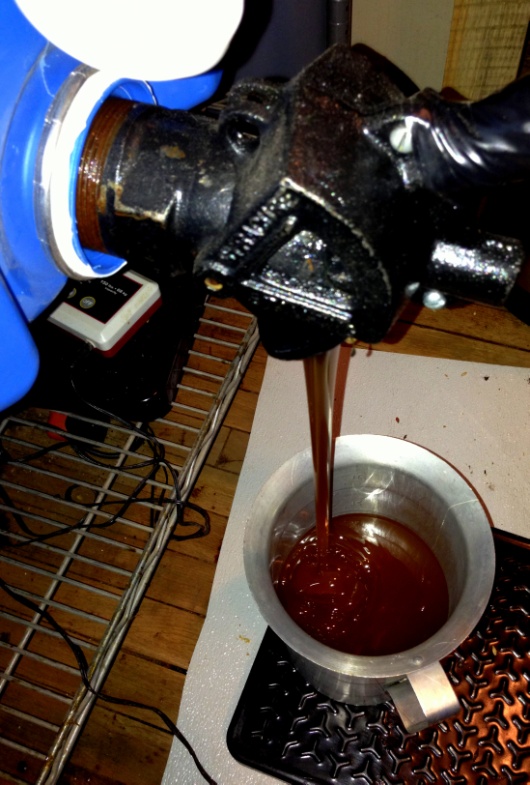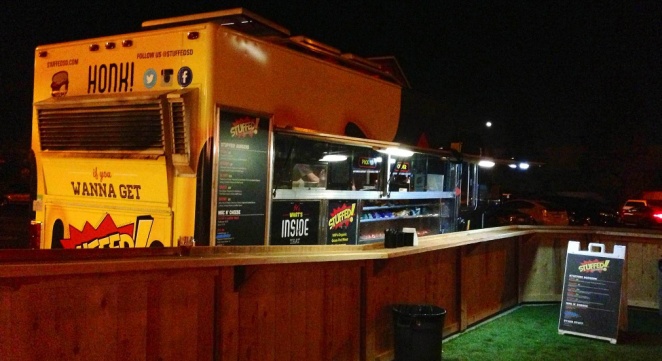By Amy Tindell
I admit that it was with not a small amount of trepidation that I suggested a 45 minute drive north to Stone Brewery for dinner after a long day of contentious deposition taking. I experienced slightly more trepidation in pointing out further that if we somehow negotiated CA traffic for a 6pm arrival, we could even participate in the last brewery tour of the day. Luckily, my boss – a seasoned, highly-respected senior patent litigation partner at my firm, and longtime wine connoisseur – found my description of the Stone Brewery World Bistro and Gardens sufficiently intriguing to attempt the trip.


Once safely underway in the car, I explained to him that this was not just some random trip to a no-name brewery, but what some beer enthusiasts would consider a pilgrimage, to one of the largest, most famous, and most successful craft breweries. Stone, launched in 1996, is the brainchild of Greg Koch and Steve Wagner, who met at a UC Davis Extension course about beer. Together, the two have cultivated their “slow food” philosophy and aversion to “fizzy yellow beer” to create an empire encompassing the brewery, 2 World Bistro restaurants complete with patios and gardens, and the farm that supplies raw materials to the entire operation. Along with the architecture of its brewery and the organic gardens surrounding it, Stone is best known for its high hop-and alcohol-content beers, particularly its Arrogant Bastard Ale, which has an advertising campaign that revolves around the slogan “You’re Not Worthy”. (Click through to the link; it’s worthy.)

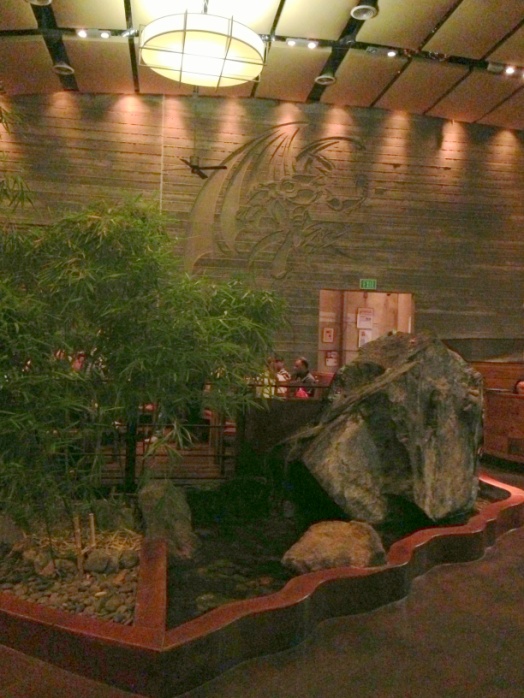
My boss and I miraculously arrived in time for the 6pm tour (not to mention a pint of Pliny the Elder on draft), but were forced to apply our exemplary advocacy skills to convince the staff to allow us to partake, since said tour was already full. I’ve learned that very few people, least of all California beer brewers, desire to listen to the pleas of impassioned Boston patent litigators.


The tour guide shuttled her thirsty bunch through the double doors to a large room filled with glistening brewing equipment, and proceeded to explain, quite accurately, the process of brewing beer, and Stone’s particular philosophy on the art. I watched with pride as my boss, the wine aficionado, enthusiastically raised his hand when the guide asked first-time brewery visitors to identify themselves, and proceeded to ask insightful questions along the tour.



Following the tour, we tasted the sample selections for the day, including the IPA, the Levitation amber ale, the special release Old Guardian and, of course, the Arrogant Bastard Ale. While Arrogant Bastard, with its smooth caramel, malty, dark fruit character, holds its place as a favorite, I was impressed with the Old Guardian. This was my first taste of the barleywine, and it was not too sweet and pleasingly dry, with a dried fruit spiciness to the taste. But, just as in patent litigation, we had to conquer quickly and move on to the next challenge, because our dinner reservation was closing in on us.

The hostess seated us on the patio, a delightful setting to two Bostonians growing weary of an especially harsh winter. By now darkness had fallen and the patio was lit with stringed lights and scattered fire pits. The gardens surrounded the patio tables, complete with miniature waterfalls and rocky ponds, and an army of frogs piped up in full song to greet us. I explored Stone’s menu, wondering where else I could find tikka marsala, a chicken and wild boar sandwich, homemade kimchi, brisket, schnitzel, and yakisoba on the same menu, particularly with ingredients sourced from a local organic farm and accompanied by suggested beer pairings. Feeling quite at home, we exchanged notes on beer and wine culture, and of course, plotted our strategy to win our case. Accustomed to the scurvy-inducing New England cold, we found that the fresh ingredients made a delectable difference in our meals, and enjoyed one last beer as we finished our feasts.

Fully satiated, I took a quick tour of the gardens even though it was dark. Stringed lights illuminated paths to inviting groups of wooden chairs, and the sounds of burgling water and frogs continued to fill the night. I briefly imagined moving to San Diego and regularly spending calm, reflective nights drinking beer in the gardens at Stone.


But then my phone buzzed, announcing the arrival of the rough draft of the day’s deposition transcript in my inbox, which I dutifully forwarded to my boss, who was inspecting a miniature bamboo forest near the patio. Alas, it was time to leave Stone Brewery to return to my professional duties. However, I will admit that it was gratifying (and humbling) to be able to share my alleged expertise with my boss, given all that he’s taught me. It only reinforces the hypothesis that beer plays a crucial – and worthy – role in supporting civilization, modern and historical. Fortunately, it doesn’t show any signs of abdicating that role, particularly when civilization continues to associate beer with this:








